Ever wondered why your neighbor's cat doesn't have claws, while yours does? Well, it might have been declawed, a practice that's far from as simple as it sounds. Declawing a cat isn't just about removing their claws. It's about taking away a vital part of their body and identity. Yet, some people choose to do it for their convenience. In our discussion today, we're going to talk about why cats should not be declawed.
We'll show you what it really means for a cat to be declawed and why this practice is frowned upon by many countries around the world. We'll also explore the long-term effects, which are not just physical but also emotional and behavioral.
What if a cat can't use its claws? What happens to its ability to defend itself or mark its territory? Can you imagine the pain of having a part of your fingers amputated? If not, why should a cat go through it?
We'll also debunk the myth that declawing is a simple nail trim. We'll reveal the truth behind the scenes and why many cats try to hide their pain after such a procedure.
We won't stop at just discussing the problems. We'll also give you alternatives to declawing, and effective ways to control your cat's scratching without causing them any harm.
So, are you ready to uncover the truth about declawing and learn how to make your home a claw-friendly space? Let's get started.
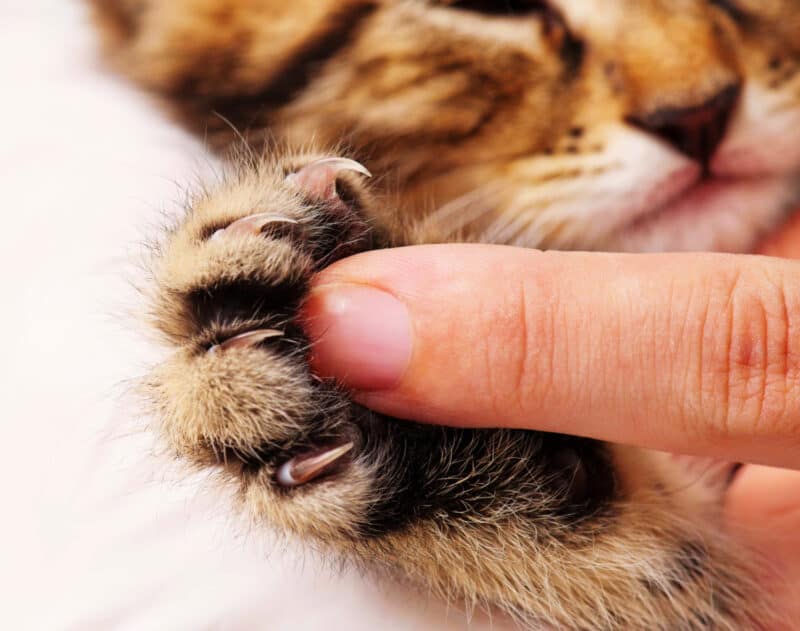
The Hard Truth About Declawing Cats
Declawing is literally maiming a cat. It is illegal and termed "inhumane" and "unnecessary mutilation" in most countries of the world because of its crippling effects, not only physically, but emotionally and behaviorally.
Declawing may result in permanent lameness, arthritis, and other long-term complications. Many declawed cats suffer from depression and some case studies of cats have suffered negative health effects due to this selfishly convenient, mostly American, cruel practice.
Understanding Declawing As A Procedure
Declawing is serious surgery. It is not merely a trimming of the toenails, but amputation of the last joint or bone of your cat's "toes".
Envision this painful operation and its painful recovery period in which your cat still has to use his feet to walk, jump, and scratch in his litter box regardless of the pain and discomfort he is experiencing and you can understand why it is not a humane act. There are no wheelchairs or bedpans for cats.
Dealing With Post-Declawing Behavior
Cats by nature are very self-sufficient and will try to hide their pain. De-clawed cats may begin to exhibit unacceptable behaviors that will do damage instead of preventing damage in your home, as they try to compensate for their discomfort.
SIGN UP FOR THECATSITE'S EMAIL UPDATES >
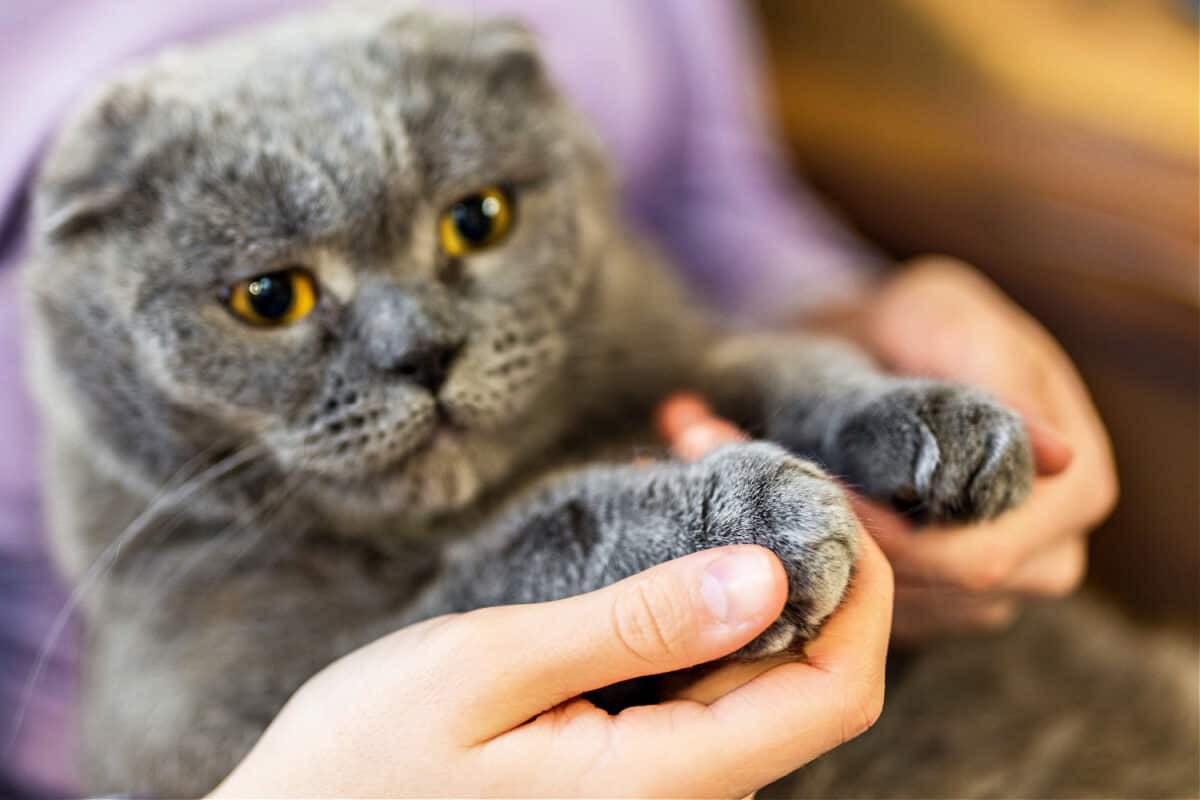
The Impact Of Declawing On A Cat's Life
Unwanted Consequences
Urine damage and property destruction are major ongoing results of de-clawing. They can't dig properly in their litter box so they will often find a more comfortable place to urinate like your living room carpet or they may spray against your kitchen cupboards or doors.
The urine penetrates deeper than any claws do once it gets in your drywall and floorboards! You may also experience chewing damage to things like wood furniture and cords.
Defenseless And Vulnerable
De-clawing also deprives your cat of his primary means of defense, leaving him prey to predators if he ever escapes outside. A cat's claws are vital to his sense of balance, mobility, survival, and to his sense of security.
They feel helpless, naked, powerless, and vulnerable, and often become hostile to people, including you, and are more apt to bite - teeth can penetrate much deeper than claws!
Ethical And Professional Standpoints On Declawing
The Stand Of Veterinarians And AVAR
Your cat's claws give him the grace, agility, and beauty that is unique to felines. Amputating this important part of his anatomy drastically alters the conformation of his feet. Most cat guardians would not allow their cat to have this surgery if the word 'amputate' was used.
The Association of Veterinarians for Animal Rights (AVAR) is "opposed to cosmetic surgeries and to those performed to correct 'vices'. Declawing generally is unacceptable because the suffering and disfigurement it causes are not offset by any benefits to the cat. Declawing is done strictly to provide convenience to people."
There are many veterinarians who refuse to declaw or who declaw only under extreme duress or medical emergencies. To me, the sign of a true and caring veterinarian is one that is respectful of your cat's mind, soul, and body.
The Global Perspective On Declawing
The following is a list of countries in which declawing cats is either illegal or considered extremely inhumane and only performed under extraordinary circumstances: England, Scotland, Wales, Italy, France, Germany, Austria, Switzerland, Norway, Sweden, Netherlands, Northern Ireland, Ireland, Denmark, Finland, Slovenia, Portugal, Belgium, Brazil, Australia, New Zealand, and Yugoslavia.
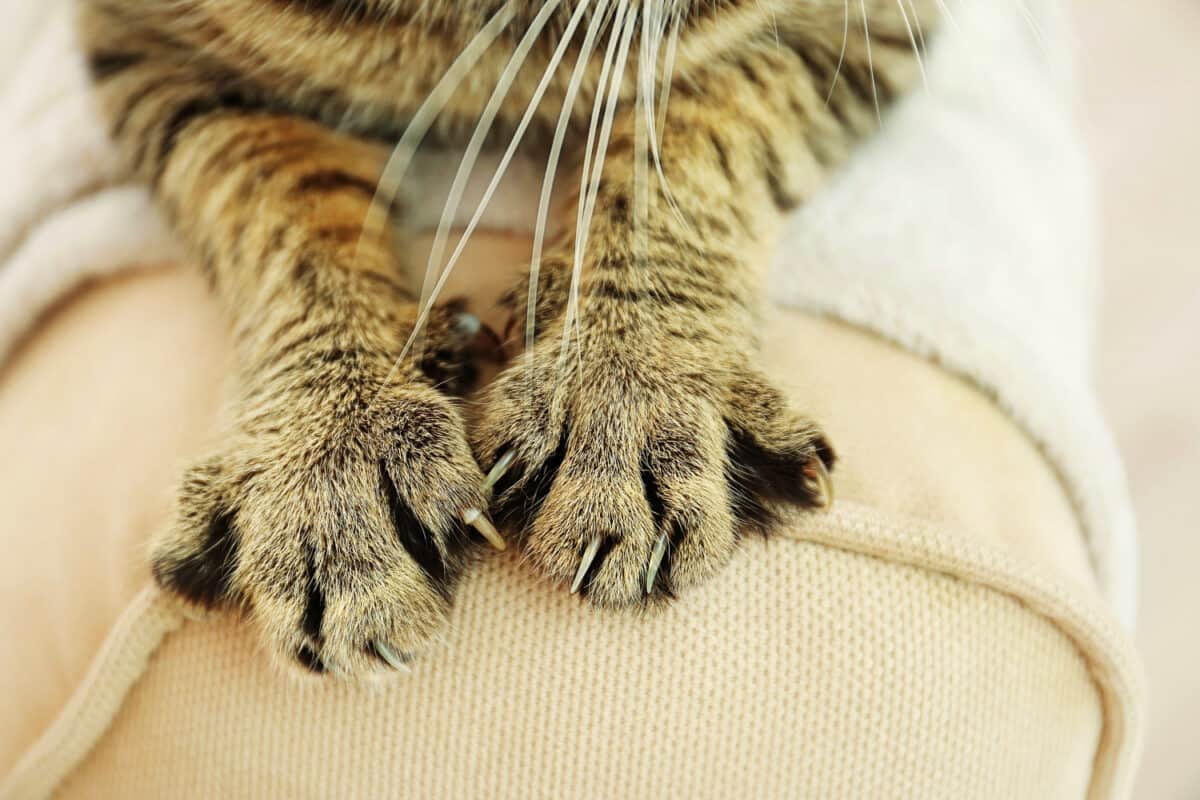
Alternatives To Declawing And Encouraging Appropriate Scratching
Deterrents And Training
You can discourage your cat from scratching in forbidden places by placing aluminum foil or duct tape over that area temporarily because cats do not like to scratch these types of surfaces. A squirt of water, loud noise, or whistle can also deter him during the training period.
If you choose to trim your kitty's nails, keep in mind that he won't be able to scratch as effectively and as powerfully as he desires and has strength for. Read more about trimming your cat's claws here.
Tools To Facilitate Proper Scratching
My home is filled with scratching posts that I bought from our local pet supply retailer that my cat, Maui, has loved to use since he was a kitten. He has never even thought about using our sofas or chairs! But for those who adopt adult pets or have a little more trouble trying to train their cats, look at this.
Developed by a veterinarian, Soft Paws are vinyl nail caps that are applied to your cat's claws. This amazing product effectively covers the claws so no damage occurs when your cat scratches.
They will fall off with the natural growth of your cat's nails, at which time you replace them as needed. But again, use discernment, as they may prevent your kitty from climbing up his post.
Understanding And Respecting Your Cat's Needs
Since scratching is a natural behavior for your cat, you don't want to take that away from him. Scratching is one-way cats place their mark and establish their turf.
Their paws also contain scent glands that leave their own special scent on their territory. It also serves to provide your cat with exercise to keep him in good shape.
The act of scratching stretches and pulls and works the muscles of a cat's front quarters. Read more about how to introduce your cat to scratching posts here.
Patient Training And Rewarding Results
Depending on your kitty's age, and personality, and the amount of love, devotion, and patience you convey to him, he will learn to use his new post for his scratching pleasure.
SIGN UP FOR THECATSITE'S EMAIL UPDATES >
A Pawsitive Conclusion
We've dissected the truth about declawing, which is essentially an amputation, and its long-term impacts. The consequences range from physical discomfort and disability to behavioral changes that could disrupt your home environment.
Cats, being stoic creatures, may attempt to hide their pain, resulting in misunderstood behaviors that often backfire on the objective of declawing.
We also explored the global stance on declawing. The extensive list of countries where declawing is considered illegal or extremely inhumane should underline the seriousness and the global consensus on this issue.
Importantly, we've presented alternatives to declawing. From behavioral training, and appropriate deterrents, to introducing tools like scratching posts and nail caps, there are various non-harming ways to manage your cat's natural scratching behavior.
Remember, scratching is not a vice—it's a natural need that serves various purposes for a cat, including marking territory, exercising, and maintaining claw health.
The key takeaway is understanding and respect. Understand the essential role of claws in a cat's life and respect their natural behaviors. With love, patience, and appropriate training methods, you can encourage your cat to use their claws in a way that harmonizes with your home environment.
It's a win-win situation, ensuring the well-being of your feline friend while preserving the integrity of your living space.
Your cat's well-being hinges on the decisions you make, and choosing not to declaw is a step towards a happier, healthier life for your furry friend. Let's make a claw-friendly world for our feline companions. They deserve nothing less.
Written by Janis Cooper
Comments? Leave them using the form below. Questions? Please use the cat forums for those!
Note: We may get commissions for purchases made through links on this page.

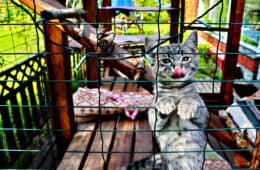
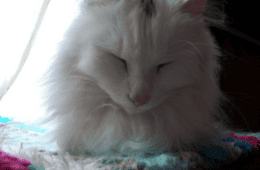

7 comments on “Why Cats Should Not Be Declawed – Harmful Consequences”